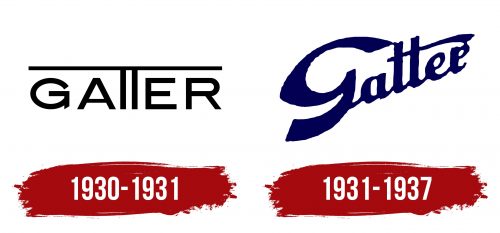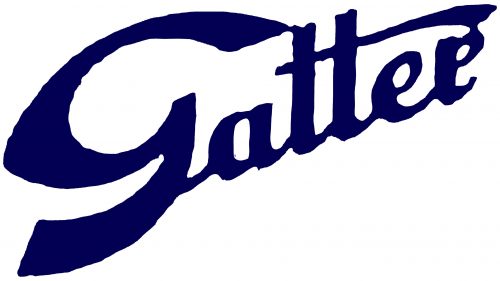The Gatter logo shows the company’s scale and continuous development, during which the main direction of its work crystallized. The inscription matches the founder’s handwriting, highlighting the family’s sole contribution to the brand’s growth.
Gatter: Brand overview
Gatter, born in 1934 by engineer Josef Gatter and his two children, began in Prague, Czechoslovakia. Initially, the family business specialized in custom body construction and producing additional components for cars produced by other companies.
With the production of its first independent car, Type 10, in 1937, the Gatter company moved to a new stage of development. Despite the modest power of the 4-cylinder engine, the car was aerodynamic and advanced in design. Over the next ten years, the company expanded its lineup to include moderately priced sedans and coupes aimed at the domestic Czechoslovak market.
Art Deco’s influence permeated Gatter’s innovative designs and unique styling, especially in the years following World War II. During this period, the company launched new models, including the Type 50 sports car and the Type 75 luxury sedan, further strengthening its position in the automotive world.
By the late 1950s, however, things had changed for Gatter. Faced with stricter regulations and stiffer competition from more established Czech automakers, the company went on a downward trajectory. Finally, in 1962, an unmanageable financial situation led Gatter to file for bankruptcy, ending nearly three decades of business.
Despite the company’s demise, its legacy was significant. Producing approximately 55,000 vehicles during its existence, the company significantly impacted the Czechoslovak automotive industry, laying the groundwork for the country’s future role as an automotive manufacturing center.
Meaning and History
What is Gatter?
The company was founded by engineer Josef Gutter and his two children in Prague, Czechoslovakia. The family business specializes in custom bodywork and producing additional components for vehicles manufactured by other companies. Known for their craftsmanship and attention to detail, the Gutter family created custom bodies and various automotive parts, helping to improve existing vehicles.
1930 – 1931
The first Gatter emblem, created between 1930 and 1931, features a stylized company name shaped like a car body. The two “t” letters in the center are connected by crossbars, forming an image of a car roof. The other letters are arranged to resemble passengers sitting by the windows. This unique design reflects the company’s focus on producing car bodies and parts for other manufacturers during that period. The company was named after its founders, a father and his two sons with the surname Gatter, highlighting the family roots and traditions of the business.
1931 – 1937
The Gatter logo, representing a Czech car manufacturer from the 1930s, captures the elegance and sophistication of that era. The word “Gatter” is written in a flowing cursive script, placed at an angle, symbolizing the brand’s ambition and forward momentum. This angled orientation suggests movement and progress, key qualities for a car manufacturer.
The two letters “t” are connected by a single, long horizontal stroke that seamlessly transitions into the letter “r.” This unique feature highlights the brand’s attention to detail and craftsmanship.
The main color used in the logo is a rich, dark blue, conveying trust and reliability. Dark blue is also associated with professionalism, which is essential for a company in the automotive industry.
The italic font and diagonal placement evoke a sense of nostalgia and sophistication. These elements capture the timeless appeal and classic beauty of Gatter cars. The flowing cursive script adds elegance, making the logo a brand identifier and a piece of art reflecting the company’s heritage and prestige.
The elongated stroke connecting the two “t” s emphasizes the seamless integration and unity within the brand, symbolizing the meticulous craftsmanship in each Gatter vehicle. It also adds a dynamic quality to the logo, suggesting speed and efficiency.
The Gatter logo represents the brand’s values and heritage. The flowing cursive script, oblique angle, and rich dark blue color create an elegant and sophisticated logo. The unique connection between the two “t” s and the letter “r” showcases the brand’s attention to detail and commitment to quality craftsmanship.
This logo captures the spirit of the 1930s, reflecting that era’s timeless elegance and sophistication. It communicates the brand’s dedication to growth, development, and producing high-quality retro cars. The Gatter logo is not just a symbol of a bygone era but a testament to the brand’s enduring appeal and craftsmanship.






